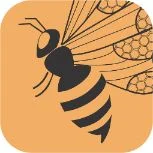Comprehensive Detailed Guide about Buckwheat Honey
Buckwheat honey is used in numerous ways by people. It's a nutritious, natural sugar, a concentrated energy source, and an antiquated folk remedy for wellbeing and healing. It is also a functioning ingredient in skin care and beauty products and the subject of medical examination. So what precisely is this sweet, syrupy superfood, and how might it help you?
Table Of Contents

- What is Buckwheat Honey?
- What Are the Characteristics of Buckwheat Honey?
- What Does Buckwheat Honey Taste Like?
- How Is Buckwheat Honey Produced?
- How do Honey Bees Produce Buckwheat Honey?
- Which is the Best Environment for Producing Buckwheat Honey?
- What Are the Health Benefits Offered by Buckwheat Honey?
- Other Benefits of Buckwheat Honey
- How to Incorporate Buckwheat Honey in the Kitchen & In the Diet?
- Is Buckwheat Honey Vegan?
- Takeaway
- Buy Our Buckwheat Honey
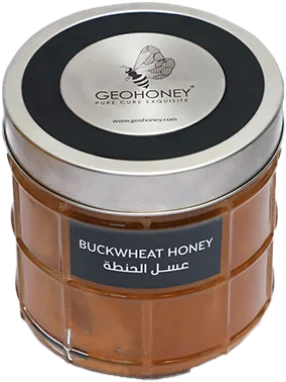
What is Buckwheat Honey?
Buckwheat honey is solid, strong-flavoured honey with a darker colour tone that looks practically black and is produced from the nectar collected by buckwheat flowers. Buckwheat is a famous plant with honey beekeepers because it has copious blossoms, yet its production has gradually diminished over the years. A buckwheat field in full blossom seems to frame a dense ground cover of white flowers, yet in reality, every individual plant is somewhat skinny and awkward when lifted from the beginning. Blossoming begins around three weeks following planting, and the thick fields of blossoms give a productive wellspring of nectar for honey bees. This thick carpet of buckwheat flowers goes on for a couple of weeks and then tapers as the plant develops.
Buckwheat honey usually gets its dark colour from polyphenols, the excellent antioxidants found in red wine, tea, dark chocolate and berries. Its flavour is rich and malty, with notes of black cherries and chocolate. Buckwheat honey shades from dark purple to black yet is generally golden with a slightly reddish colour. It never turns sour and may get crystallized in a long time. However, it is effectively recognizable with its intense molasses flavour and a persistent lingering after-flavour.
What Are the Characteristics of Buckwheat Honey?
Buckwheat honey's taste isn't ideal for everybody, except once acclimated with it, some people fall totally in love with its lingering flavour impression. Its dark colour shading and taste are reminiscent of molasses, and it's a top pick in Europe. Darker honey varieties like this are said to contain more antioxidants. Antioxidants give a defence against free extremists and assist with battling coronary illness, cancer, and different ailments. Buckwheat honey is additionally a great source of iron. Different advantages include:
Higher in mineral substance
No fat or cholesterol
Gives quick energy
It can be kept in its original quality without refrigeration
Like most types of honey, the dietary benefit given by Buckwheat honey is little. Even though it's gluten-free, it's carb-weighty. On the splendid side, it contains a higher measure of copper, zinc, magnesium and iron than different types of honey.
It is a better option than sugar; however, it contains many calories and carbs, so it ought to be devoured in moderate quantities. Nevertheless, its remarkable flavour draws in many food lovers, and they appreciate eating it directly from the honey jar.
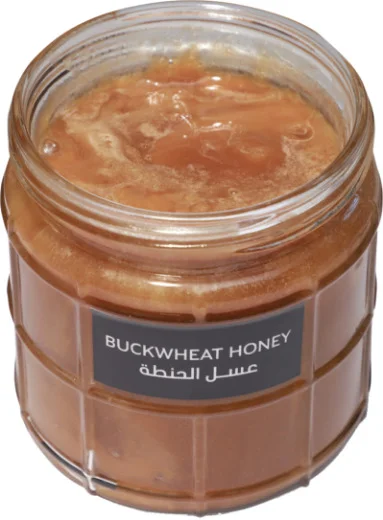
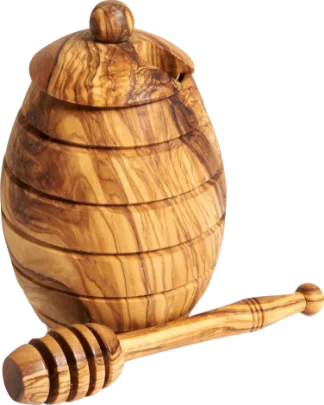
What Does Buckwheat Honey Taste Like?
Ordinarily, buckwheat honey offers a flavour like molasses. Generally, it has subdued pleasantness and a solid flavour profile that is portrayed by musty and malty notes.
The flavour of buckwheat honey can differ contingent upon the specific subspecies of buckwheat that the honey bees fertilize during the honey-making measure. The fragrance of buckwheat honey could be described as woodsy.
How Is Buckwheat Honey Produced?
Buckwheat honey is dominatingly produced when raising and reaping buckwheat for its seeds, and commonly farmers will welcome beekeepers and apiaries to a position close to their buckwheat crops. They do this because honey bees assume a pivotal part in pollinating their yield, and the by-product of this is the production of buckwheat honey.
Seed yield is meagre when honey bees are not used as pollinators; seed yield is meager – only 2 to 3% of the yield is normally accomplished when honey bees are available. Production transcendently happens early in the year when buckwheat blossoms sprout. When a colony is situated almost in a field near to blossoming buckwheat, they can accumulate almost 300 lbs of nectar per acre.
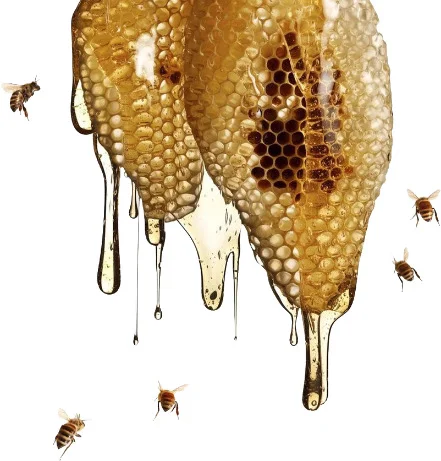
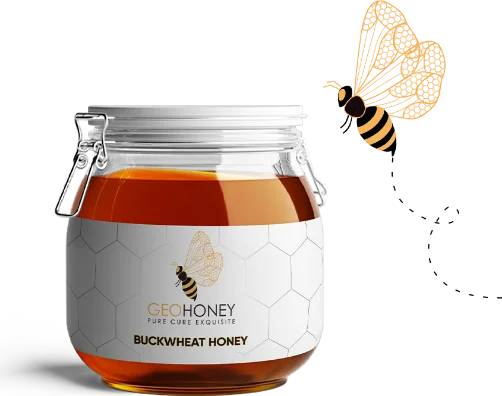
How do Honey Bees Produce Buckwheat Honey?
The time the honey bee gathers the buckwheat nectar, it is blended in with an enzyme inside the honey bee's mouth. The actual chemical is invertase, or the "honey bee compound" discharged from the honey bee's organs. When the honey bees return to the hive, they will pass the buckwheat nectar they have gathered between themselves, further mixing the nectar in with the "honey bee compound".
This will decrease the water content changing over the nectar into nectar. They will then, at that point, store the buckwheat honey into wax cells, but still, now, the water content might be excessively high. So, to diminish the water content, the honey bees will fan their wings over the wax cell; this, thus, will dissipate a portion of the water.
Whenever they've completed the interaction, the honey will have a water content generally below 20%. It will then, at that point, be covered, and the honey bees will repeat the process again and again.
Which is the Best Environment for Producing Buckwheat Honey?
Beekeepers farm practically all of the buckwheat honey produced commercially in locations near the farms where buckwheat is grown. Buckwheat farmers seldom need to utilize supplemental fertilization as a piece of their activity, so migrant hives are seldom crucial for the whole process.
Buckwheat honey isn't regularly viewed as a valuable honey item, so commercial honey producers once in a while search buckwheat out as a monofloral hotspot for their hives. Buckwheat is most ordinarily filled in mild areas, and it does well in generally short growing seasons. That makes it a significant wellspring of winter feed for hives situated in regions where winters will generally be longer.
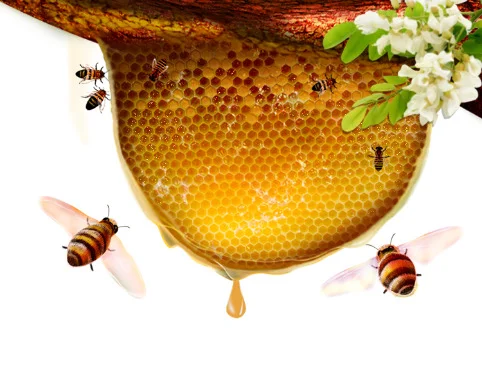

What Are the Health Benefits Offered by Buckwheat Honey?
-
Provides Relief from Cough & Cold
People who have respiratory diseases or colds are inclined to get attacked more in the evening time. As indicated by this review, Buckwheat honey is more effective than OTC cough medications and is a great natural ingredient to provide instant relief.
-
Helps in Maintaining Cholesterol Levels
Another examination has shown that Buckwheat Honey aids in maintaining cholesterol levels in the blood. This assists in lowering blood pressure and further developing heart wellbeing.
-
Wound Care
Applying Buckwheat honey topically on the wounds is incredibly beneficial as it draws out moisture from the wounds and helps eliminate bacteria. In addition, it helps prevent the growth of microbes and bacteria because of the rich antibacterial properties.
-
Skin Care
Buckwheat honey is rich in beneficial properties that help protect the skin and keep it supple and smooth. Search for honey-based healthy skin products, or make your skin lotion by mixing coconut oil and honey in your electric blender until it appears as whipped cream.
Other Benefits of Buckwheat Honey
1. Decreases the danger of heart stroke.
2. Buckwheat honey also limits the chance of arterial hypertension and other cardiovascular illnesses.
3. It's prescribed to use darker honey for skin break out and other skin issues because of honey's antibacterial properties and detoxification.
4. It supports blood development inside the body and can assist with anaemia.
5. Because of low sugar substances, darker honey can also help decrease cholesterol levels or glucose levels for individuals with diabetes.
6. Analysts have even demonstrated buckwheat honey to stop DNA mutations that form cancer cells.
7. It helps with stress relief and balancing the nervous system.
8. It regenerates the body after a workout or active day due to high iron content.
9. It promotes reaching your spiritual awakening and finding your inner self.
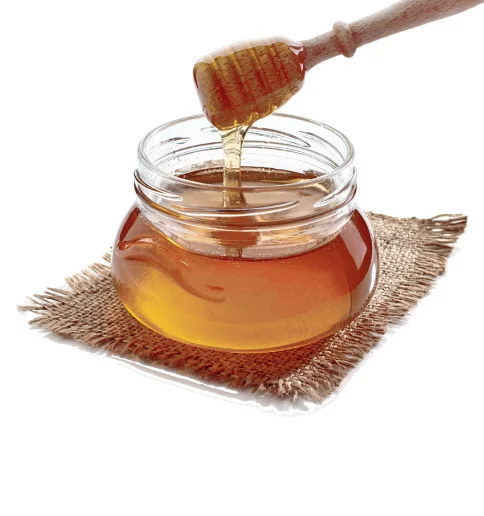
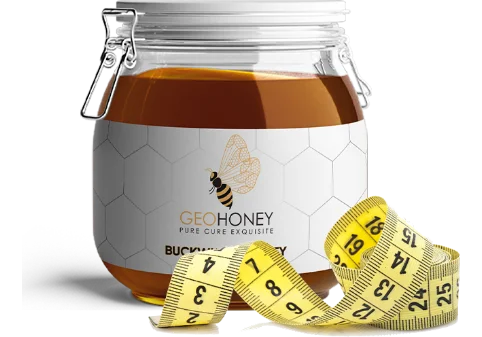
How to Incorporate Buckwheat Honey in the Kitchen & In the Diet?
If you give it a try, you'll see that buckwheat honey weds amazingly well with numerous food varieties. Its taste and thick texture make it an optimal substitute for maple syrup, ideal for drizzling over hotcakes and French toast. It's fantastic in marinades and grill sauces. It gives a tangy counterpoint when topping sweet treats like ice cream or frozen yoghurt; it adds a new flavour to rolls, bread, and stands up to the flavours of strong cheeses like goat or blue cheese. It's even utilized by numerous brewers when making beer or mead.
As with most honey varieties, there's little health benefit in buckwheat honey; while it's gluten-free, it's also carb-substantial on account of its regular sugars as a whole (more fructose than glucose, which implies it's slower to crystallize than lighter varieties). On the bright side, it contains more iron, magnesium, zinc and copper than most honey varieties. Thus, buckwheat honey is a "better" substitution for sugar yet contains enough carbs and calories that should always be consumed in moderate quantities.
It carries a one of a kind character to food sources, and many individuals appreciate it directly from the container; however, the genuine advantages of buckwheat honey are health-related.
Usage of buckwheat honey will rely upon what you're attempting to treat.
1. You can apply the raw honey straightforwardly to the injury and cover it with a clean bandage for wounds.
2. You can take one tablespoon of raw buckwheat honey or mix it into your favourite as an overall well-being supplement. Buckwheat honey is additionally an extraordinary
3. natural sugar for any of your meals or desserts. You can blend it into oats, waffles, smoothies, or baked items — the potential outcomes are tremendous.
You can swallow honey alone or mix it with a warm herbal tea for sore throats and colds. To treat a kid with a cold, the physicians suggest one portion of honey in the following amounts:
1. Age 2 to 5: 2.5 mL
2. Age 6 to 11: 5 mL
3. Age 12 to 18: 10 mL
Know that buckwheat honey, similar to any other honey variety, ought not to be given to newborn babies below one year of age. Honey contains certain microorganisms that may be harmful to infants.
Is Buckwheat Honey Vegan?
The Vegan Society doesn't consider honey as a vegan product; this incorporates cornflower honey. However, they accept that since some honey farmers supplant honey with a sugar substitute when gathering, it will typically not have the fundamental micronutrients of honey, in this manner being impeding to the honey bees.
Moreover, they accept that in traditional beekeeping, honey bees are explicitly reproduced to build productivity. Which they accept prompts a narrowing of the populace genetic pool and builds weakness to illness and enormous scope die-offs.
They additionally accept that many honey farmers will separate their hives post-gather and take away the queen honey bee's wings to prevent them from passing on to begin another state. Accordingly, the Vegan Society doesn't think about honey as a vegetarian. That doesn't stop a few veggie lovers arguing it's fine if they source their honey from dependable sources that don't practice the above mentioned.
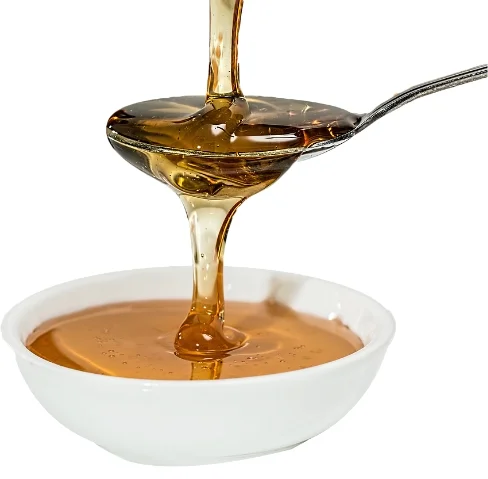
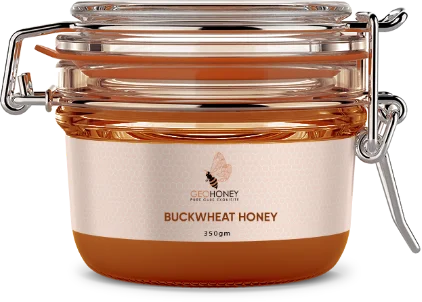
Takeaway
It is a more uncommon variety of honey that a great many people haven't tried. Nonetheless, it is tasty, healthy, and not hard to track down available to be purchased. It has an unmistakably unique character to common honey varieties and blends. If you are searching for the best buckwheat honey online, visit Gehoney today to get the best. Our honey is 100% pure, smooth, and raw. It's unheated, unprocessed, unpasteurized, and unblended to ensure that you gain maximum health benefits and can be an excellent nutritional addition to your diet!
What’s the buzz, Join the hive !
SIGN UP TO OUR NEWSLETTER
Be the first to know about our hot deals, new arrivals.





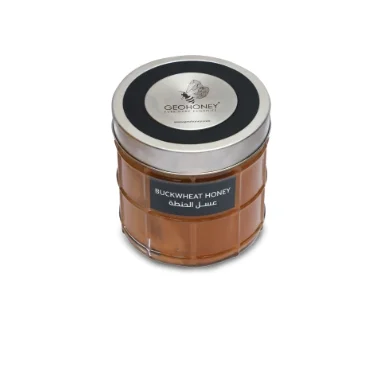
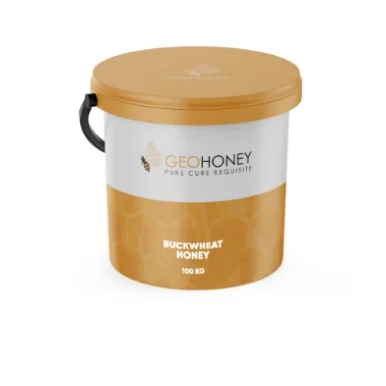


 Pay By Cards
Pay By Cards
 PayPal
PayPal
 Stripe
Stripe
 Other Payment Methods
Other Payment Methods







